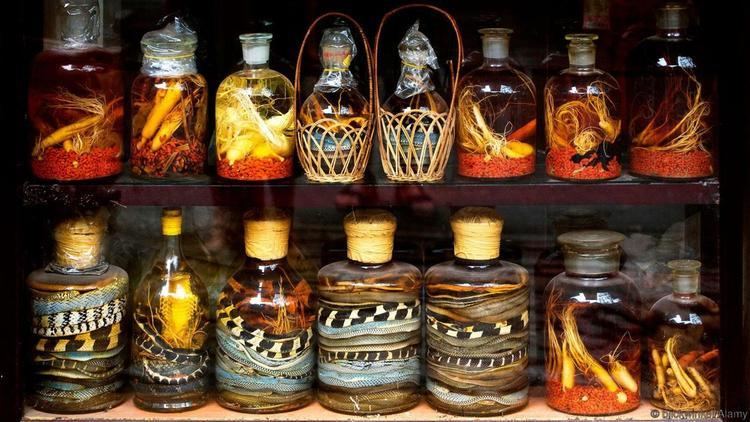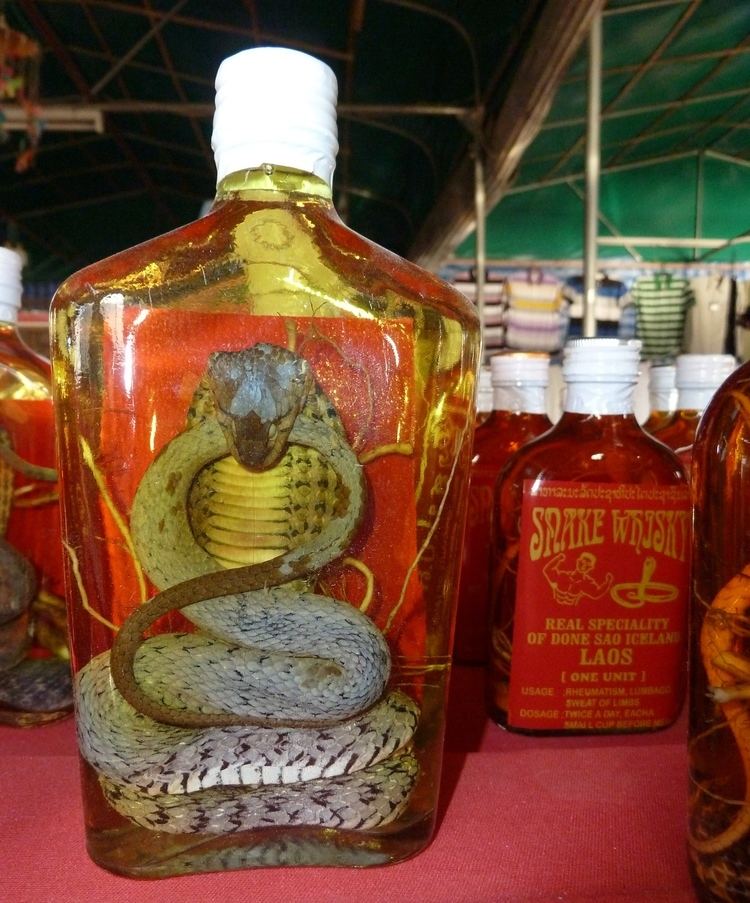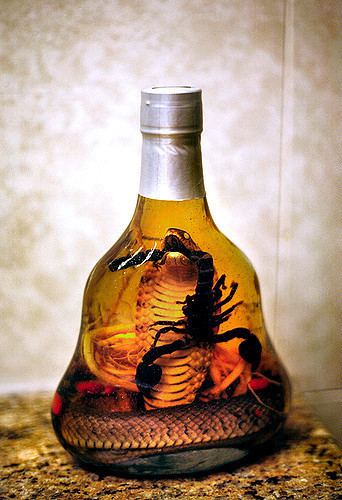 | ||
Similar | ||
Snake wine aka kickass cobra juice
Snake wine (蛇酒, pinyin: shéjiǔ; rượu rắn in Vietnamese; 뱀주, RRK: bemju in Korean) is an alcoholic beverage produced by infusing whole snakes in rice wine or grain alcohol. The drink was first recorded to have been consumed in China during the Western Zhou dynasty and considered an important curative and believed to reinvigorate a person according to Traditional Chinese medicine. It can be found in China, Vietnam and throughout Southeast Asia.
Contents
- Snake wine aka kickass cobra juice
- Snake wine includes a whole venomous snake in the bottle
- Varieties
- History
- Claims of medicinal value
- References
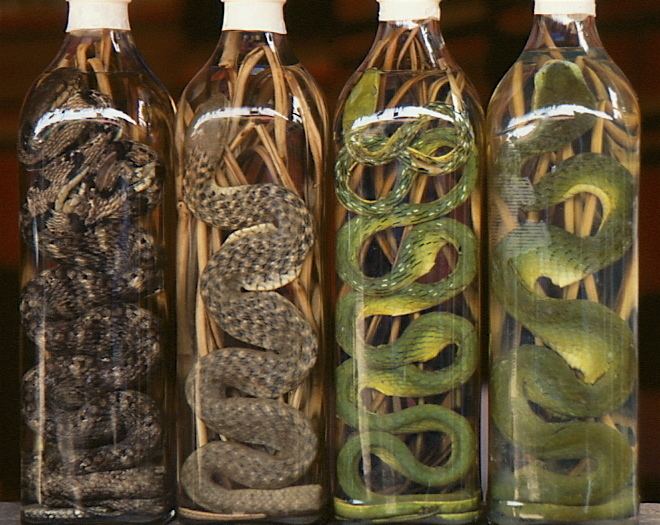
The snakes, preferably venomous ones, are not usually preserved for their meat but to have their "essence" and snake venom dissolved in the liquor. The snake venom poses no threat to the drinker. It is denatured by the ethanol—its proteins are unfolded and therefore inactive— and would be denatured by stomach acid anyway.

The Huaxi street night market (華西街夜市) of Taipei, Taiwan, is renowned for its snake foods and wine products.
Snake wine includes a whole venomous snake in the bottle
Varieties
There are two varieties of snake wine:-
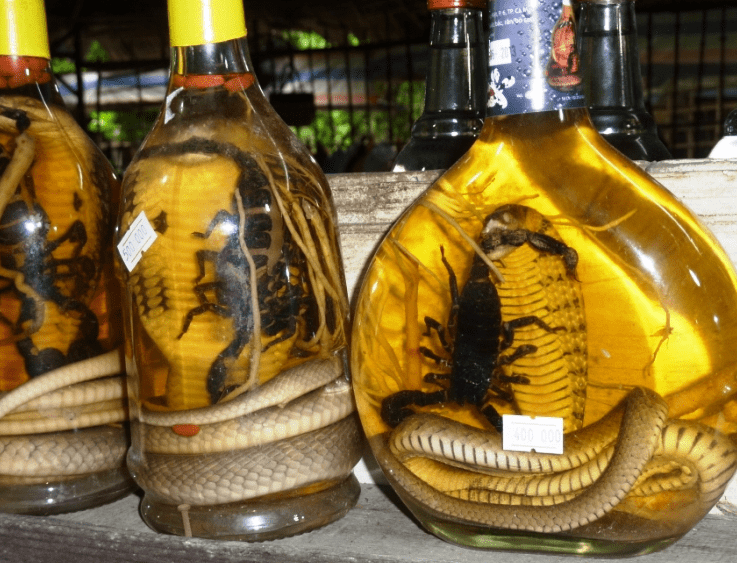
History

Snakes and their tissue portions have long been considered by followers of Traditional Chinese medicine to be invaluable for the promotion of vitality and health. The drink was first recorded to be used in China during the Western Zhou dynasty (771 BC) and the medicinal use of snakes was noted in the medical manual Shen nong ben cao jing (神农本草经) compiled between 300 B.C. and 200 A.D. The detailed use of various snake species, their body parts, and various preparations were greatly elaborated in the medical manual Bencao Gangmu (本草綱目) of Li Shizhen in the Ming dynasty.
Snake wine can be found in many areas of Vietnam, Southeast Asia and Southern China.
Claims of medicinal value

Snakes are widely believed to possess medicinal qualities and the wine is often advertised to cure everything from farsightedness to hair loss, as well as to increase sexual performance. In Vietnam, snake wine (Rượu rắn) is widely believed by some individuals to improve health and virility. A similar drink is made with geckos or sea horses rather than snakes. Snake wine, due to its high alcohol percentage, is traditionally drunk in shot glasses. Braver drinkers may eat certain parts of the snake, such as the gall bladder, eyeballs and the stomach.

It is illegal to import snake wine to many countries because the cobras and other snakes killed in the production are often endangered species.
